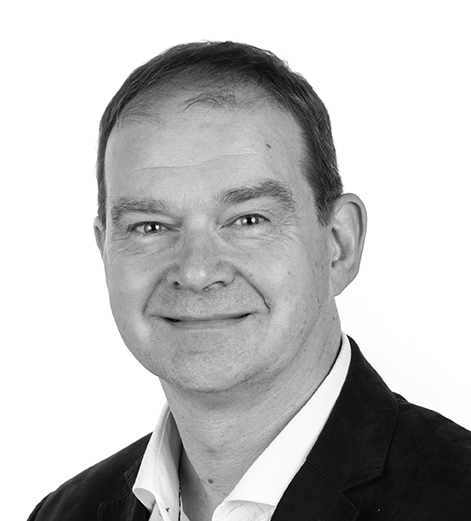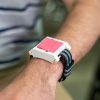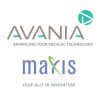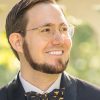If there is one constant in our fast-paced world, it is rapid and constant change.
Never before has Kurzweil’s Law of Accelerating Return, which states technology grows at an exponential rate, been more applicable than the era in which we now live. The medical technology field, in particular, is experiencing steady expansion and is expected to hold steady between 5% and 5.5% growth each year between 2019 and 2022.
As the chief technology officer at a company that provides advanced magnetic detection technologies, I have seen this first-hand. Never before has the rate of new developments in electronics, software and systems been so high.
In order to keep pace with the advancements in the medical technology industry (among many other fields), inventive engineers are at a premium. Not only do they have to be highly skilled and educated, they need to be prepared to take their work out of the lab and the classroom and into the office and the boardroom. The tech sector’s requirements for recent engineering graduates is constantly evolving—from fresh perspectives to highly collaborative approaches that lead to the best outcomes for various products and solutions.
Moving Beyond Technical Knowledge
While most engineering students who come out of university are accomplished intellectually and academically, they are not as adept at handling the business world and the expectations that are placed on them in a professional environment. In order to progress and truly spur innovation forward in medical technology, freshly minted engineers must master both the technical and the professional elements of their careers.
That is why I recently accepted the opportunity to return to my alma mater, the University of Birmingham (UK) as a visiting professor in the Department of Electronic, Electrical and Systems Engineering (EESE)— a three-year tenure that began this past September. During my time at the University, I will focus on helping students develop important workforce skills such as teamwork, research, verbal and written communication and presenting—all absolute necessities in the “real world.” Without these abilities, graduates who have a breadth of knowledge and ideas for, say, developing new magnetic screening techniques outside MRI rooms, will have a much harder time seeing them come to fruition.
As a visiting professor, I will have the opportunity to work with more than 200 students and help prepare them to effectively communicate and apply their ideas to the next wave of incredible inventions, enhancements and new solutions that make the world a better place. As both a CTO and an engineer, I will advise students on what companies are looking for when hiring new talent, and help them achieve success as they begin their careers. I will also work with EESE to bring these perspectives into the course material so it is integrated into the department’s teaching.
This, in turn, will send polished engineering candidates into the private sector equipped with the tools to be immediately successful—and contribute to the success of the companies that they join. What’s more, the increased focus I place on employability skills during my time at the university will lead to stronger and deeper ties between the EESE and employers. This, in turn, will benefit students, the university and various industries—such as medical technology and security—well beyond the three years I spend there.
Closing the Career Preparation Gap
According to a 2016 study from Universities UK, students value the career guidance they receive from their general advisors—particularly when it comes to receiving leads on work placement opportunities upon graduation.
“However,” the report continues, “many students primarily value this (advice) when it is tailored or integrated into their discipline or area of interest. For example, a politics student would prefer tailored, knowledgeable advice on how to identify, apply and venture into a career in a related field, rather than general advice on CV-building. As a result, it is difficult to ascribe shared priorities to students in different subjects.”
What’s more, the 2018 McGraw-Hill Education’s (MHE) survey on readying college graduates for the workforce in the United States notes that just four in 10 college students feel very or extremely prepared for their future careers.
This is exactly the gap my work with students will close. As an experienced engineer in both academia and the private sector, I am well positioned to instruct them on the specific expectations and requirements of careers in electronic, electrical and systems engineering.
In turn, they will be much better prepared to contribute to their company right away. That means more confidence and efficient productivity much faster; freshly minted engineers are more self-assured and can hit the ground running to contribute meaningful work immediately.
As noted above, new technology and its integration into our lives is evolving at a breakneck pace. If incoming employees are more adept at collaborating and communicating within a team, presenting to various departments (i.e., sales, marketing, boards) in a clear manner and executing projects within stringent deadlines, then their value as entry-level employees is far greater.
Real-World Experience, Real-World Success
There are many lessons I have learned over the past 15 years, most of which are pertinent to my new role with the University of Birmingham. I have the knowledge and experience of having left academia to take on a career as an engineer in the private sector. I have hired dozens of entry-level engineers and can share that real-world intelligence with my students so they have first-hand insight into what potential employers expect out of candidates.
Organizations want to recruit high-quality, well-rounded people. For graduates, in particular, this is not just about their technical knowledge. Other vital factors carry weight, including such as communication skills, teamwork, enthusiasm, creative thinking and above all, passion, to name but a few.
Another important lesson I impart to my students is how to conduct research and product development in the context of commercial viability and utility. I cannot overstate how critical this is for the medical technology field, along with the many other industries these students will enter post-graduation. It encompasses the delicate balance between the push of technology and the pull of the market. It is incredibly important that engineers beginning their careers have the ability to leverage their knowledge to commercial advantages.
Preparing engineering students for the realities of the workforce requires walking a fine line between mentoring and encouraging fresh perspectives. Students have diverse strategies and skills of their own, and these need to be developed to make them the best engineers possible.
Now more than ever, diversity of skills within a team is far more effective than group think. Well-prepared and confident new engineers will lead to assured innovators who will spearhead the next wave of technological advancements. I strongly urge my experienced colleagues to join me in fostering their growth.







